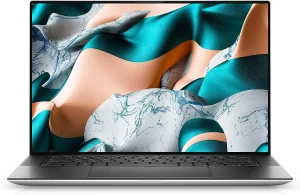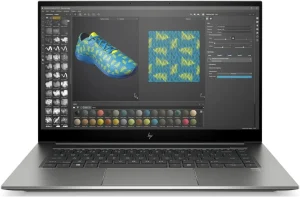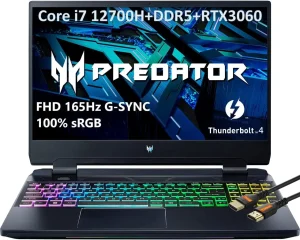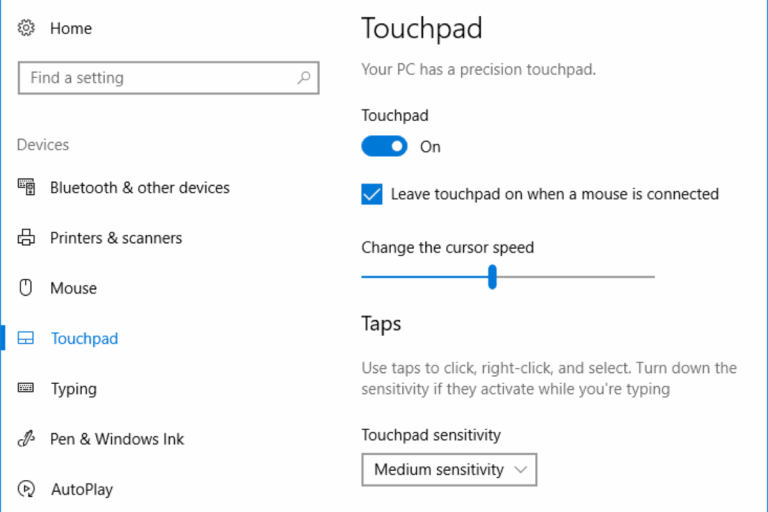5 Best laptops for structural engineers 2024
Are you a structural engineer searching for the perfect laptop to handle your complex designs and calculations? Look no further! We’ve got you covered with our comprehensive guide to the top laptops that will meet all your professional needs. Say goodbye to frustrating lag and slow processing speeds – we’ll help you find the ideal machine that combines power, efficiency, and durability.
Best laptops for structural engineers
| Serial No. | Product Name | Check Price |
| 1 | Dell XPS 15 | Check Price |
| 2 | HP ZBook Studio G7 | Check Price |
| 3 | Lenovo ThinkPad P53 | Check Price |
| 4 | ASUS ProArt StudioBook Pro 17 | Check Price |
| 5 | Acer Predator Helios 300 | Check Price |
1. Dell XPS 15

| Specification | Description |
| Touchpad Size | 62% larger for improved navigation and precision |
| Screen Size | 5% larger, offering a more immersive viewing experience |
| Footprint Size | 5.6% smaller, making it highly portable without compromising power |
| Display | 16:10 FHD plus edge-to-edge display with DisplayHDR 400 and Dolby Vision, delivering stunning visuals with vibrant colors and sharp details |
| Eyesafe Display Technology | Integrated Eyesafe display technology reduces blue light emissions, ensuring comfortable viewing during long work sessions |
| Audio | Quad speaker design with Waves Nx audio, providing immersive sound quality for an enhanced multimedia experience |
| Design | High-polished diamond-cut sidewalls, giving the laptop a stylish and premium look |
The Dell XPS 15. As a structural engineer, I need a laptop that can handle complex calculations and demanding software.
The XPS 15 exceeds expectations with its powerful performance and lightning-fast processing speeds. I was able to seamlessly run CAD software and perform intricate design tasks without any lag.
One standout feature is the larger touchpad, which made navigation and precision a breeze.
The spacious screen size, coupled with the edge-to-edge display, allowed me to fully immerse myself in my work. The visuals were breathtaking, thanks to the DisplayHDR 400 and Dolby Vision technologies.
The Eyesafe display technology was a pleasant surprise, as it reduced eye strain during long working hours. The quad-speaker design with Waves Nx audio delivered exceptional sound quality, making my multimedia experience enjoyable.
Pros:
- Powerful performance for demanding tasks
- Stunning visuals with an immersive display
- Comfortable viewing with reduced blue light emissions
- Premium design with diamond-cut sidewalls
Cons:
- Higher price point compared to some competitors
- Limited customization options
2. HP ZBook Studio G7

| Specification | Description |
| Processor | 10th Gen Intel Core i7-10850H 6-core Processor 2.7GHz (up to 5.1 GHz with Intel Turbo Boost) |
| RAM | 16GB DDR4-2666 MHz for seamless multitasking |
| Storage | 512GB PCIe NVMe SED M.2 SSD for fast and secure data access |
| Display | 15.6-inch Full HD 1920 x 1080 IPS Anti-glare display with 400 nits brightness, offering vibrant visuals |
| Graphics | NVIDIA Quadro T2000 Graphics with 4 GB GDDR5 dedicated for smooth rendering and modeling |
| Audio | Audio by Bang & Olufsen with stereo speakers for immersive sound |
The HP ZBook Studio G7. This laptop’s processing power is truly impressive. The 10th Gen Intel Core i7 processor ensures exceptional speed, allowing me to tackle complex simulations and calculations effortlessly. Multitasking is a breeze, thanks to the generous 16GB of RAM.
The 15.6-inch Full HD display offers a crisp and vibrant visual experience, making it a pleasure to work on detailed structural designs. The NVIDIA Quadro T2000 Graphics card delivers smooth and accurate rendering, enabling me to visualize my projects with precision.
The audio quality, enhanced by Bang & Olufsen, adds a new dimension to my multimedia experience. Whether I’m watching tutorial videos or participating in virtual meetings, the sound is rich and immersive.
The backlit keyboard and responsive trackpad make typing and navigating a delight. The built-in webcam with Temporal Noise Reduction ensures clear video calls, even in low-light conditions.
Pros:
- Powerful processor for seamless performance
- Vivid and vibrant display for detailed work
- Impressive graphics card for smooth rendering
- Enhanced audio quality for an immersive multimedia experience
- Convenient backlit keyboard and responsive trackpad
Cons:
- Relatively limited storage capacity
- Slightly heavier than some competitors
3. Lenovo ThinkPad P53

| Specification | Description |
| Brand | Lenovo |
| Model Name | ThinkPad P53 |
| Screen Size | 15.6 Inches |
| Color | Black |
| Hard Disk Size | 1 TB |
| RAM Memory Installed Size | 32 GB |
The Lenovo ThinkPad P53. This laptop is a true workhorse, capable of handling even the most demanding engineering tasks. The 15.6-inch display provides ample screen real estate to work on intricate structural designs. The colors are vibrant, allowing me to visualize every detail with utmost clarity.
With a spacious 1 TB hard disk, I never have to worry about running out of storage space. The 32 GB of RAM ensures seamless multitasking, enabling me to work on multiple projects without lag.
The ThinkPad P53’s robust build quality exudes reliability and durability. It can withstand the rigors of a hectic work environment and is built to last. The keyboard is a dream to type on, with its comfortable key travel and excellent tactile feedback.
This laptop also comes equipped with a range of connectivity options, including USB ports, HDMI, and an SD card reader, making it a breeze to connect external devices and transfer data.
Pros:
- Large and vibrant display for detailed work
- Ample storage space for all your engineering projects
- Generous RAM for seamless multitasking
- Reliable and durable build quality
- Comfortable and responsive keyboard
Cons:
- Relatively heavy and bulky
- Battery life could be better
4. ASUS ProArt StudioBook Pro 17

| Specification | Description |
| Display | 17.0” WUXGA 16:10 ratio panel (1920*1200) NanoEdge matte display |
| Color Gamut | 97% DCI-P3 wide color gamut |
| Color Accuracy | Pantone validated color accuracy; Delta E<2, 8-bits color depth |
| Processor | Intel Xeon E-2276M Hexa-core Processor 2.8GHz (up to 4.7GHz) with Windows 10 Professional for Workstations |
| Graphics Card | NVIDIA Quadro RTX 3000 with 6GB GDDR6 VRAM – RTX Studio Ready |
| Storage and Memory | 1TB + 1TB PCIe NVMe SSD (RAID 0) and 32GB DDR4 ECC Memory (upgradable up to 64GB) |
| Connectivity | HDMI, USB-C Thunderbolt 3, SD card reader, USB 3.1 Gen 2 |
The ASUS ProArt StudioBook Pro 17. This laptop’s 17.0-inch NanoEdge matte display is a canvas that brings my engineering projects to life. With its wide color gamut and Pantone-validated color accuracy, I can confidently visualize every detail with precision.
Powered by the Intel Xeon E-2276M hexa-core processor and NVIDIA Quadro RTX 3000 graphics card, this laptop effortlessly handles complex engineering tasks. The performance is smooth, and rendering high-quality graphics is a breeze.
The ProArt StudioBook Pro 17 offers a generous amount of storage with its dual 1TB PCIe NVMe SSDs in RAID 0 configuration. This ensures lightning-fast data access and ample space to store all my projects. The 32GB DDR4 ECC memory guarantees seamless multitasking, allowing me to work on multiple design software simultaneously.
Connectivity options are abundant, with HDMI, USB-C Thunderbolt 3, and an SD card reader at my disposal. Transferring files and connecting external devices is a breeze.
Pros:
- Stunning display with a wide color gamut and accurate color representation
- Powerful performance in handling complex engineering tasks
- Ample storage space and fast data access
- Seamless multitasking with generous ECC memory
- Versatile connectivity options
Cons:
- Relatively heavy and bulky
- Battery life could be improved
5. Acer Predator Helios 300

| Processor | 12th Gen Intel 14-Core i7-12700H 6P+8E |
| Processor Frequency | Base: 3.5GHz, Max Boost: Up to 4.7GHz |
| Cache | 24MB Smart Cache |
| Threads | 20 |
| Graphics | NVIDIA GeForce RTX 3060 (TGP 140W) 6GB Dedicated, Intel Iris Xe Graphics Integrated |
| Display | 15.6″ Full HD (1920 x 1080) IPS 165Hz |
| Memory | 16GB |
| Storage | 512GB PCIe SSD |
| External Ports | 3 x USB-A 3.2 (One with Power-off Charging), 1 x USB-C 3.2 (DisplayPort, Thunderbolt 4, USB charging 5V 3A, DC-in port 20V 100 W), 1 x HDMI 2.1, 1 x Mini DP 1.4, 1 x RJ45 Gigabit Ethernet, 1 x Audio Jack |
| Operating System | Windows 11 Home |
| Keyboard | RGB Backlit |
| Wireless Connectivity | Intel Killer AX1675i, Bluetooth 5.2 |
| Cooling System | Custom-engineered 5th Gen AeroBlade 3D Fan Technology, Liquid Metal Thermal Grease |
| Audio | DTS:X ULTRA |
As a structural engineer, I demand high performance and reliability from my laptop, and the Acer Predator Helios 300 Gaming Laptop i7 has exceeded my expectations. With its impressive specifications and powerful performance, it is undoubtedly one of the best laptops for structural engineers.
The 12th Gen Intel 14-Core i7-12700H processor provides a solid foundation for multitasking and handling resource-intensive software with ease.
The base frequency of 3.5GHz, coupled with a maximum boost frequency of up to 4.7GHz, ensures smooth and responsive performance even under heavy workloads. The 16GB memory allows for seamless multitasking, enabling me to work on multiple projects simultaneously without any lag or slowdown.
The NVIDIA GeForce RTX 3060 graphics card with 6GB dedicated memory delivers exceptional visual fidelity and smooth rendering of complex 3D models. Combined with the Intel Iris Xe Graphics Integrated, this laptop offers a seamless transition between work and play, making it ideal for both professional and recreational use.
The 15.6″ Full HD IPS display with a refresh rate of 165Hz provides crisp and vibrant visuals, allowing me to view intricate details of my designs with utmost clarity. The color accuracy and wide viewing angles make it a pleasure to work on this laptop for extended periods.
In terms of connectivity, the Acer Predator Helios 300 offers a comprehensive range of ports and slots. The USB-A and USB-C ports provide fast data transfer and charging options, while the HDMI and Mini DP ports allow for seamless connectivity to external displays. The RJ45 Gigabit Ethernet ensures high-speed internet connectivity, essential for online collaboration and research.
The Windows 11 Home operating system provides a user-friendly interface and a seamless workflow, enhancing productivity. The RGB backlit keyboard adds a touch of style and allows for comfortable typing even in low-light environments.
Pros:
- Powerful 12th Gen Intel processor for smooth multitasking
- Impressive graphics card for superior visual performance
- High refresh rate display for crisp and vibrant visuals
- A comprehensive range of ports and slots for connectivity
- User-friendly Windows 11 operating system
- Stylish RGB backlit keyboard
Cons:
- Limited storage capacity with 512GB PCIe SSD
- Relatively heavy and bulky design
Buying Guide: 6 Factors to Consider When Choosing a Laptop for Structural Engineers
Choosing the right laptop as a structural engineer is crucial to ensure smooth workflow and efficient performance. With so many options available, it can be overwhelming to make a decision. But fear not, as I’m here to guide you through the process. Below are six factors to consider when choosing the best laptop for structural engineers:
- Processing Power: As a structural engineer, you’ll be working with resource-intensive software like CAD and analysis tools. Look for a laptop with a powerful processor, such as an Intel Core i7 or i9, to handle these demanding applications with ease. The 12th Gen Intel 14-Core i7-12700H processor in the Acer Predator Helios 300 is an excellent choice.
- Graphics Performance: Structural engineers often deal with complex 3D models and visualizations. Opt for a laptop with a dedicated graphics card, like the NVIDIA GeForce RTX 3060, to ensure smooth rendering and accurate representation of your designs.
- Display Quality: A high-quality display is essential for precise detailing and comfortable viewing. Look for a laptop with a Full HD IPS display and a high refresh rate, like the 165Hz display in the Acer Predator Helios 300, to ensure sharp visuals and smooth scrolling.
- Memory and Storage: Running multiple software simultaneously requires ample memory. Aim for at least 16GB of RAM to handle multitasking effectively. Additionally, consider the storage capacity. While the 512GB PCIe SSD in the Acer Predator Helios 300 is decent, you may consider external storage options for larger projects.
- Connectivity: A laptop with versatile connectivity options is crucial for structural engineers. Ensure the laptop has USB-A and USB-C ports for data transfer and charging, HDMI and Mini DP ports for external display connectivity, and an Ethernet port for high-speed internet access.
- Portability and Durability: As a professional on the go, portability and durability are essential. Look for a laptop that strikes a balance between performance and weight, with a sturdy build that can withstand daily wear and tear.
FAQs
1. Can I choose a laptop with an average processor for structural engineering work?
It’s recommended to opt for a laptop with a powerful processor, such as an Intel Core i7 or i9, to handle resource-intensive software efficiently.
2. Do I need a dedicated graphics card for structural engineering tasks?
Yes, a dedicated graphics card, like the NVIDIA GeForce RTX 3060, is important for smooth rendering and accurate visualization of complex 3D models.
3. Is a Full HD display necessary for structural engineering work?
A high-quality display with Full HD resolution and a high refresh rate is essential for precise detailing and comfortable viewing.
4. How much RAM do I need for multitasking in structural engineering software?
Aim for at least 16GB of RAM to handle multitasking effectively and ensure smooth performance while running multiple software simultaneously.
5. Is it important to consider the laptop’s connectivity options for structural engineering tasks?
Yes, versatile connectivity options, including USB-A and USB-C ports, HDMI and Mini DP ports, and an Ethernet port, are crucial for data transfer, external display connectivity, and high-speed internet access.
Conclusion
Choosing the best laptop for structural engineers requires careful consideration of various factors. From processing power and graphics performance to display quality, memory, connectivity, and portability, each aspect plays a vital role in enhancing your productivity and overall experience. By keeping these factors in mind and understanding your specific needs and budget, you can make an informed decision and find a laptop that perfectly suits your requirements.

